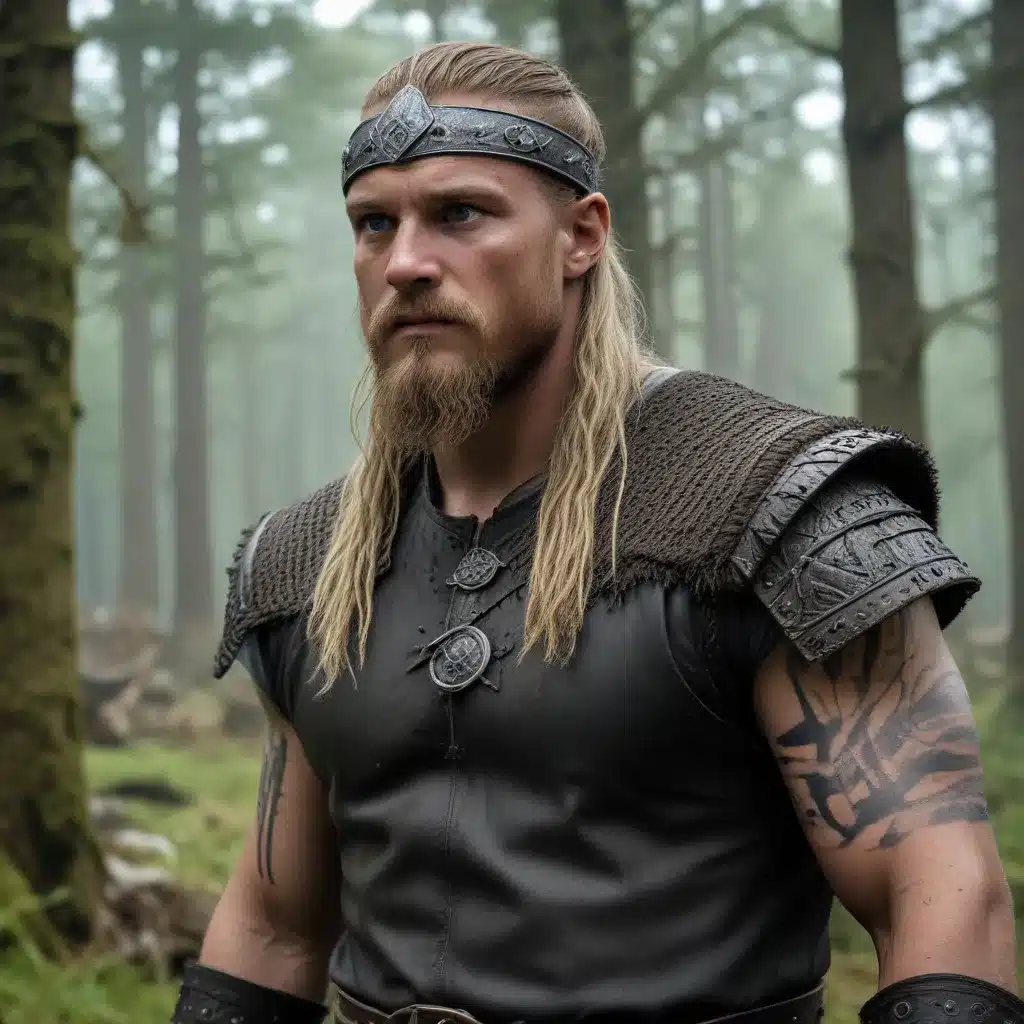
As a leading arborist and urban forester at TriCounty Tree Care, I’ve long been fascinated by the depiction of the natural world in popular media. The new Netflix series “Vikings: Valhalla” is no exception, offering a captivating glimpse into the complex urban forest dynamics of the Viking Age.
The series, set in the early 11th century, follows the exploits of legendary Norse figures like Leif Eriksson, Freydis Eriksdottir, and Harald Hardrada as they navigate the political and religious tensions of the time. But beyond the human drama, the show provides a richly textured backdrop of the built and natural environments in which these characters operate.
The Forests of Kattegat
At the heart of the series lies the bustling port city of Kattegat, a commercial hub where Scandinavian traders, warriors, and religious factions converge. The city itself is nestled amidst a complex urban forest, with a mix of native coniferous and deciduous tree species lining the fjords and hillsides.
“Kattegat is the beneficiary of that trade. You will experience different people and beliefs like nowhere else,” explains Jarl Estrid Hakon, the tolerant and cosmopolitan ruler of the city. This diversity is reflected in the urban forest, where species like Norway spruce, Scots pine, silver birch, and European beech thrive alongside introduced ornamental trees and shrubs.
The urban forest of Kattegat serves as more than just a picturesque backdrop; it is an integral part of the city’s defenses and infrastructure. Tall, mature Scots pine and Norway spruce line the city walls, providing both visual screening and physical barriers against potential invaders. The deciduous trees, meanwhile, are strategically placed throughout the city’s public spaces, offering shade, wind buffering, and stormwater management benefits to the inhabitants.
The Tempestuous Temple at Uppsala
Beyond the confines of Kattegat, the series also explores the forested landscape surrounding the pagan temple complex at Uppsala. Here, the urban forest takes on a more primeval, mystical character, with towering spruce, fir, and birch trees cloaking the sacred site in an aura of ancient power.
The temple itself is nestled within this old-growth forest, its wooden architecture evoking the stave churches of medieval Norway. Carved dragon motifs and a web of wyrd symbol adorn the temple’s portals, connecting the site to the rich tapestry of Norse mythology and cosmology.
This forest sanctuary, however, is not immune to the religious conflicts that tear through the region. In a pivotal scene, the temple is set ablaze by the zealous Christian Jarl Kåre, reducing the once-majestic structure to a charred carapace. The destruction of this centuries-old urban forest landmark serves as a poignant reminder of the fragility of these sacred spaces in the face of religious upheaval.
Greenland’s Resilient Ecosystems
The series also ventures to the remote shores of Greenland, where Leif Eriksson and his fellow Greenlanders navigate the challenges of their subarctic environment. Here, the urban forests take on a more sparse, hardy character, dominated by dwarf birch, willow, and juniper species adapted to the harsh climate.
Despite the harsher conditions, the Greenlanders have developed a deep reverence for the natural world, drawing sustenance and spiritual sustenance from the land. This reverence is exemplified in the understated cremation ritual performed for the fallen Njal and Skarde, their bodies set adrift on the open sea in a traditional Viking funerary rite.
The Evolving Landscapes of the Viking Age
As the series progresses, the viewer bears witness to the dynamic nature of the urban forests and landscapes of the Viking Age. In England, the once-vibrant Roman-era urban forests surrounding London have been cleared and rebuilt to accommodate the growing Christian population, with free-standing stone crosses and modest wooden churches now dotting the countryside.
Conversely, in Scandinavia, the established urban forests of Kattegat continue to evolve, with the city’s walls and defenses expanding to accommodate the growing population and commercial activities. The temple at Uppsala, meanwhile, stands as a testament to the enduring power of the old Norse beliefs, even as the region undergoes a gradual Christianization.
These shifting land-use patterns and cultural dynamics are a poignant reminder of the resilience and adaptability of urban forests, as they respond to the ebb and flow of human settlement and belief systems. As an arborist and urban forester, I’m deeply fascinated by the way these natural elements are woven into the narrative, serving as both a backdrop and an active participant in the unfolding drama.
Lessons for Modern Urban Forestry
The world of “Vikings: Valhalla” offers valuable insights for those of us working in the field of urban forestry today. The series highlights the crucial role that urban forests play in shaping the character, defenses, and sustainability of human settlements, a lesson that is just as relevant in the modern era as it was a millennium ago.
Through the lens of this captivating historical drama, we are reminded of the need to thoughtfully integrate natural elements into our urban planning and design, leveraging the ecological, cultural, and aesthetic benefits that trees and forests can provide. Whether it’s enhancing city defenses, regulating microclimate, or fostering a sense of connection to the natural world, the urban forests of the Viking Age serve as a powerful inspiration for the green infrastructure initiatives of today.
As I continue to follow the exploits of Leif, Freydis, and their compatriots, I can’t help but draw parallels to the work we do at TriCounty Tree Care. Our team of arborists and urban foresters is dedicated to preserving and enhancing the urban forests that are the lifeblood of our local communities, just as the inhabitants of Kattegat and Uppsala relied on their natural surroundings to sustain their way of life.
Through thoughtful stewardship, ecological restoration, and community engagement, we strive to ensure that the trees and forests of today will continue to play a vital role in shaping the resilient, sustainable cities of the future – much like the urban forests that have captivated audiences in “Vikings: Valhalla.”


